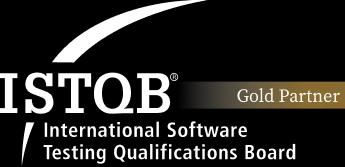
What is a LMS? A detailed exploration of the learning management system
LMS (Learning Management System) is a familiar term in the field of modern education and corporate training. It is a system that helps manage, track, and organize online learning programs, thereby enhancing the effectiveness of teaching and training management. So, what exactly is LMS, and why has it become an indispensable tool in today's era of digital transformation? Let's explore these topics together with Tokyo Tech Lab!
I. What is a LMS?
LMS (Learning Management System) or a learning management system, is a software platform designed to manage, deliver and track online courses. It allows educational institutions, businesses, and training organizations to create a learning environment that can be easily accessed remotely, optimizing training processes and providing efficient tools for managing learners.

LMS is not only for education but also plays a crucial role in employee training, managing learning content, and providing detailed reports on individual learning progress. The LMS software gives learners the freedom to choose when and how they learn, while also providing managers with a comprehensive view of the learning process.
II. What are the basic features of an LMS system?
A complete LMS system needs to include core features that support both learners and instructors. Below are some of the essential functions of an effective LMS:

1. Course management
Course content creation and management: LMS allows users to create online courses with various content formats, such as text, video, images, PDFs, or SCORM (Shareable Content Object Reference Model) to ensure better interaction between learners and instructors. Lessons can be categorized by topics, modules, chapters, and lectures, making it easier for learners to follow and complete tasks step by step.
Scheduling and assessment: The system automates the scheduling of lessons, tests, and assignment deadlines, helping organizations manage learning activities effectively and ensure learners adhere to the planned roadmap.
2. Learner management
Learner list management: LMS allows administrators to monitor the entire list of learners, including adding/removing learners from courses, organizing study groups, and adjusting learning paths to suit each group or individual.
Roles and permissions: Many LMS platforms allow for assigning different roles, such as learners, instructors, and administrators. Each role has specific access rights and functions, ensuring that individuals can only access the relevant parts of the system.
Progress tracking: The system automatically tracks and records the learning progress of each individual. Information such as study time, test scores, and completed assignments are stored in the system, enabling instructors and managers to assess learning progress.
3. Monitoring and reporting
Detailed learning progress tracking: LMS can track the learning process of each learner in detail, from the number of logins to the time spent on each lesson, test scores, and the number of completed assignments.
Performance reports: One of the key features is the ability to provide automated and detailed reports on the learning performance of individuals or groups. Reports can be exported in various formats, such as PDF or Excel, allowing instructors and administrators to analyze and improve teaching processes.
4. Assessment and Testing Tools
Creating quizzes and assessments: LMS provides tools that help instructors create quizzes with various types of questions such as multiple-choice, essay, and fill-in-the-blank. These quizzes can be automatically graded to reduce the workload for instructors.
Automatic grading and certificate issuance: After learners complete the course or pass the assessments, LMS can automatically grade the tests and issue online certificates. This enhances the learner's experience and reduces administrative tasks for instructors.
5. Interaction and communication
Support for interactive tools: LMS provides tools that help learners and instructors communicate and interact with each other, such as internal messaging systems, live chat, discussion forums, and virtual study groups. This enhances interaction and information exchange between instructors and learners, especially in online courses.
Integration with webinars and online classes: LMS can integrate with webinar platforms or live learning tools, allowing instructors to host teaching sessions via video call, supporting remote teaching.
6. Personalized learning experience
Customizable learning paths: LMS has the ability to personalize the learning path for each learner. Based on goals, preferences, and learning performance, LMS can suggest or automatically adjust courses that suit each individual, providing a better learning experience.
On-demand learning tools: Learners can access learning materials at any time and from anywhere, allowing them to control their learning process. This is particularly important for organizations with learners in different time zones or those needing flexible schedules.
7. Integration with other systems
Flexible integration: LMS can often integrate with other management systems such as CRM (Customer Relationship Management) to manage customer information, HRM (Human Resource Management) to manage human resource data, or marketing and accounting tools.
API support: Many LMS platforms support APIs (Application Programming Interface), allowing businesses to customize and connect the system with other software they are using.
8. Security and access management
Data security: Learning data is a valuable asset for both learners and organizations, so LMS typically includes strong security layers such as data encryption, two-factor authentication (2FA), and access control mechanisms to protect information.
Access management: LMS provides mechanisms for administrators to manage the access rights of learners, instructors, and other stakeholders, ensuring that only authorized individuals can access sensitive information.
9. Multi platform and multi device support
Access on all devices: Modern LMS platforms are designed to support access from various devices such as computers, mobile phones, and tablets. This allows learners to study flexibly from anywhere without being restricted by device limitations.
User-friendly interface: LMS platforms are usually optimized for easy use on both large and small screens, ensuring a smooth learning experience.
10. Gamification
Motivating learning: Gamification is a feature that allows LMS to integrate game elements into the learning process, such as scores, badges, and leaderboards. This helps motivate learners through competition and rewards, increasing their engagement in the course.
These features not only make LMS a powerful tool for managing the training process but also enhance the learning experience, optimizing time and resources for both learners and organizations.
III. Benefits of a Learning Management System (LMS)
An LMS offers numerous benefits for both education and businesses, enhancing training effectiveness and comprehensive learner management.

1. Benefits of LMS in Education
An LMS has transformed traditional education, offering numerous advantages for both learners and educators. Some specific benefits include:
Flexible learning, anytime, anywhere: Learners can access learning materials from anywhere and at any time, as long as they have an Internet connection. This is especially important for distance learners or those with irregular schedules.
Personalized learning experience: Each learner can have a different learning path based on their abilities and pace. LMS allows instructors to customize content and assignments based on each student's learning needs, improving learning effectiveness.
Tracking and assessing learning progress: The LMS provides automated tools to track learners' progress. Instructors can easily monitor each individual's development, enabling them to adjust teaching methods accordingly.
Cost and resource reduction: Using an LMS helps schools and educational institutions save significantly on costs related to facilities, books, and printed materials. Learners can access online learning materials without relying on printed books or fixed classrooms.
Diverse learning support: LMS allows courses to be organized with various learning formats such as video, audio, text, and interactive exercises. This enables learners to access knowledge through multiple channels, improving retention and comprehension.
Increased interaction between learners and teachers: Communication tools like chat, forums, and video calls allow learners to easily exchange information with teachers or classmates. This facilitates faster and more convenient knowledge exchange and problem-solving.
Long term learning support and document storage: LMS stores all learning materials and related information, allowing learners to review at any time, even after completing the course. This supports revision, knowledge reinforcement, and preparation for future exams or projects.
2. Benefits of LMS in Business
LMS is not only beneficial in education but also offers outstanding advantages for businesses in employee training and human resource development:

Saving time and training costs: Using an LMS allows businesses to reduce costs related to organizing in-person classes, such as room rentals, instructors, travel expenses, and printed materials. Employees can study at their workplace or from home, optimizing time and resources.
Flexible and personalized employee training: Companies can provide online training courses on a variety of topics, from technical skills to soft skills and internal processes. Employees are free to choose and learn at their own pace, enhancing their skills without interrupting daily work.
Tracking and assessing training effectiveness: LMS offers detailed reports on each employee's learning progress and training results, enabling managers to monitor progress and identify additional training needs. This helps businesses make timely decisions to develop human resources.
Ensuring compliance and certificate management: In industries requiring frequent training on regulations, safety standards, or industry norms, LMS helps businesses ensure all employees complete necessary courses. The system automatically tracks and manages certificate issuance, reminding employees of upcoming mandatory training.
Enhanced multi-channel learning: Employees can learn from various devices such as computers, mobile phones, or tablets. LMS supports multiple platforms, enabling employees to access courses anytime, anywhere, even while on the go.
Improved adaptability to change: Businesses constantly face rapid changes in technology, processes, and markets. LMS helps deliver courses that update employees on the latest knowledge, ensuring they are always ready to adapt to new changes and job requirements.
Increased interaction between departments: LMS not only supports training but also encourages employees to interact through forums, group chats, and learning communities. This strengthens collaboration between departments, fostering knowledge exchange and sharing of work experience.
Easy scalability and development: As a business grows and requires training for more employees, LMS offers flexible scalability, allowing for the addition of more courses, content, and users without incurring significant additional costs. This helps businesses meet training needs quickly and efficiently.
IV. Applications of LMS across various industries
The Learning Management System (LMS) has become an essential tool and is widely used across multiple sectors, not only in education but also in businesses and nonprofit organizations. Below are the key applications of LMS in different fields.
1. LMS in online education
1.1. Supporting e-learning and blended learning models
E-Learning (Online Learning): LMS has revolutionized online education, allowing learners to access learning materials remotely through computers or mobile devices. Educational institutions can offer entire programs, from individual courses to long-term programs, fully online.
Blended learning: LMS also supports blended learning, a combination of online and in-class learning, providing students with flexibility in choosing the learning format that suits their individual needs.

1.2. Course management and organization
Course creation and management: Universities, colleges, and training centers can use LMS to build, deliver and manage courses. This optimizes management time while ensuring that students always have easy access to learning content.
Interaction between students and instructors: Tools like discussion forums, internal messaging systems, and online classes enhance interaction between teachers and students, improving the overall learning experience.
1.3. Enhancing student engagement and progress
Gamification and assessment systems: Many schools use gamification elements to boost student engagement. Through points, badges, and virtual rewards, students are motivated to complete assignments and participate in learning activities with a healthy competitive spirit.
Progress reports: LMS provides detailed reports on each student's learning progress, helping instructors easily monitor progress and offer timely support when needed.
2. LMS in corporate training
2.1. Improving employee training and development
Managing and organizing training programs: In a corporate environment, LMS is used to deliver internal training courses, from basic skills like work process training to advanced leadership and management development programs for senior staff.
Continuous training and skill improvement: Companies can continuously update training content to align with market and technology changes. LMS enables employees to access and learn on their own schedule without needing to leave the office.
2.2. Monitoring training effectiveness and employee evaluation
Performance reporting and evaluation: LMS provides tools to measure the performance of each employee by tracking learning progress, test results, and course completion certificates. This helps HR and management assess the effectiveness of training programs.
Learning data analysis: Companies can use LMS data to analyze employee training needs, optimizing human resource development strategies.

2.3. Supporting remote and multilingual training
Training employees across locations: For large corporations with employees working in multiple countries and regions, LMS enables remote training through online courses, reducing travel and central training costs.
Multilingual support: Many multinational companies use LMS to deliver internal training courses in multiple languages, ensuring that all employees can access the necessary knowledge and skills efficiently.
V. Types of Learning Management Systems (LMS)
Learning Management Systems (LMS) today come in various types, catering to the diverse needs and scales of different organizations. Based on deployment methods, features, and customization capabilities, LMS can be categorized into the following main groups:
1. Open-Source LMS
Open-source LMS are systems where the source code is provided for free to users. This allows organizations to customize the system to their specific needs without relying on software vendors.

Advantages:
- Completely free, saving on software licensing costs.
- Customizable to meet the specific needs of the organization.
- Supported by a large community, with many available resources, plugins, and extensions.
Disadvantages:
- Requires high technical skills to install and manage the system.
- Needs resources for system maintenance, updates, and support.
2. Commercial LMS
Commercial LMS are systems developed and sold by software companies to users. This type of LMS usually comes with advanced features, professional technical support, and does not require users to have programming skills. Organizations only need to register and use the system without worrying about installation or maintenance.

Advantages:
- Easy to deploy, with no complex technical skills required.
- Full support from the provider, including maintenance, updates, and security.
- User-friendly interface with professional features like data analysis and integration with other management systems (HRM, CRM).
Disadvantages:
- Requires payment for licenses, often through monthly or annual subscriptions.
- Customization may be limited, depending on the provider.
3. On-Premise LMS
On-Premise LMS are systems installed and run on the organization’s internal servers. Organizations have full control over the system, from installation to maintenance and customization based on specific needs. This type of LMS is typically used by large organizations with strong technical teams and high security requirements.

Advantages:
- Full control over the system, including configuration and security.
- Customizable according to the organization’s specific needs without relying on a service provider.
Disadvantages:
- High costs for deployment and maintenance, including hardware and technical staff.
- Requires a skilled IT team to manage and operate the system.
4. Cloud-Based LMS
Cloud-based LMS is a system hosted and operated on the cloud, eliminating the need for software installation on the user’s server. Users only need to register for an account and access the system through a web browser.

Advantages:
- No need to manage hardware and software systems.
- Low initial deployment costs, with flexible pricing based on monthly or per-user fees.
- Regular updates without affecting the system.
Disadvantages:
- Dependent on internet connection; if the system goes down, users cannot access it.
- May have limited customization and data control.
5. Self-Hosted LMS
Self-hosted LMS are systems installed and operated on the organization’s internal server. The organization manages, maintains, and is responsible for the entire infrastructure, hardware, and software of the system.

Advantages:
- Full control over data and system configuration.
- Suitable for organizations with specific security needs or those wanting to customize the system.
- Does not depend on third parties for data access.
Disadvantages:
- High deployment and maintenance costs, including hardware, security, and system management.
- Requires a technically skilled IT team to install and manage.
- Scalability is more complex and may require additional hardware investment.
6. SaaS (Software as a Service) LMS
SaaS LMS is a type of cloud-based LMS that emphasizes offering LMS as a subscription service. Instead of installing software on internal servers, users can access and use the LMS via an internet-connected web browser. This type of LMS is popular today due to its convenience and scalability. Organizations do not need to invest heavily in technical infrastructure, as everything is managed by the SaaS provider.

Advantages:
- No need to invest in hardware and system maintenance.
- Easily scalable and updatable according to organizational needs.
- Accessible from anywhere with an internet connection.
Disadvantages:
- Dependent on the service provider for security and system availability.
- May face customization challenges if the organization has specific requirements.
Each type of LMS has distinct features and is suited to different types of organizations. Depending on size, security needs, budget, and technical capabilities, organizations can choose between open-source LMS, commercial LMS, SaaS LMS, On-Premise LMS, Cloud-based LMS, or Self-hosted LMS to effectively meet their training needs.
VI. Popular LMS platforms today
1. Moodle: One of the most famous and widely used open-source LMS platforms globally. Developed in 2002, Moodle supports the creation of online courses and training systems with a user-friendly interface and high customization capability.
2. Open edX: Developed by Harvard and MIT, initially designed for massive open online courses (MOOC), but it has evolved into a powerful LMS for both education and business.
3. Chamilo: Another popular open-source LMS platform, Chamilo is easy to use and provides powerful learning management tools, helping organizations easily implement online training programs.
4. Blackboard: One of the leading commercial LMS platforms, widely used in higher education and large enterprises. This platform supports online and blended learning with many complex features, offering a wide range of tools for learning management, including assignments, tests, and progress reporting.
5. Canvas LMS: A commercial LMS platform known for its user-friendly interface and ease of use. Canvas LMS integrates many modern features, such as learning analytics and mobile learning support.
6. SAP Litmos: A powerful commercial LMS for businesses, helping to manage employee training programs effectively. SAP Litmos has an intuitive interface, provides assessment tools, detailed reporting, and supports online training.
7. TalentLMS: One of the most popular SaaS-based LMS platforms, particularly among small and medium-sized enterprises. TalentLMS supports integration with many other applications and offers simple customization options.
8. Docebo: Another SaaS LMS with the ability to support global corporate training. Docebo provides powerful learning tools, from content management and assessments to learning analytics.
9. Totara Learn: A popular on-premise LMS platform offering strong customization capabilities and high security, suitable for organizations with complex training management requirements.
10. Teamhub LMS: An LMS platform developed by Tokyo Tech Lab with diverse features, designed specifically to help businesses and educational institutions effectively manage and implement training programs. Aiming to provide a comprehensive solution, Teamhub LMS focuses on optimizing the user experience, ensuring ease of use, and suitability for businesses of all sizes, from small to large.

Key features of Teamhub LMS include:
- Course management: Allows for flexible creation and customization of courses, from content design to managing instructors and learners. Courses can be easily distributed to learners, ensuring all employees or students can seamlessly access learning materials.
- Detailed tracking and reporting: Provides tools to track learner progress and performance through detailed reports, helping organizations evaluate results and adjust training programs promptly.
- Remote and flexible learning: Teamhub LMS supports online learning, allowing users to learn anytime, anywhere, without being restricted by time or location, aligning with today's remote work trends.
- High customization: With Teamhub LMS, you can easily customize the system’s interface and functions according to the specific needs of your organization, ensuring the system fits all of your business’s training processes.
- Security and reliability: Teamhub LMS prioritizes data security, ensuring that learner information and training materials are safely stored.
- Extensibility: Easily integrates with other tools, such as human resource management systems (HR), helping to create a complete workforce training and development process.
- Optimized for businesses: Helps businesses improve the efficiency of internal training, with features such as group management, performance evaluation, and real-time employee progress tracking.
==> Sign up now to explore and experience the unique and diverse features of TEAMHUB LMS!
VII. Target users who should use LMS
The Learning Management System (LMS) is not only suitable for educational institutions but is also widely applied across various sectors. Below are the key groups that can benefit from using an LMS:
1. Businesses
LMS is an important tool for training and employee development in businesses. Online courses help employees quickly and efficiently acquire knowledge, improve skills, and stay updated with new industry trends. Especially, businesses can manage and track training progress, optimizing the process of human resource development.
2. Educational institutions
For schools, universities, and educational centers, LMS provides a powerful platform to manage online courses. This system allows teachers to easily create content, interact with students, and track learning outcomes. Students can access courses anytime, anywhere, creating a flexible learning environment that suits individual needs.
3. Government agencies
Government agencies often use LMS to organize training on laws, regulations, and policies for public servants. LMS helps them systematically manage the training process, saving time and costs compared to traditional training methods.
4. Non governmental organizations (NGOs)
NGOs often need to train staff or volunteers on specific topics such as community development, environmental protection, and health education. LMS facilitates the organization of courses, provides structured knowledge, and tracks the progress of learners.
5. Training service providers
These companies can use LMS to offer online training services to their clients. LMS enables them to manage multiple courses simultaneously, providing tools to evaluate and certify learners after completing the courses.
With its flexibility and customization capabilities, LMS can meet the training needs of various types of organizations and industries, enhancing training efficiency and quality.
VIII. Conclusion
LMS is not just a learning management system but also a tool that helps educational institutions and businesses optimize their training processes, enhance education quality, and improve work efficiency. To maximize these benefits, Tokyo Tech Lab introduces Teamhub LMS - an educational management system developed by us. It is the perfect solution with flexible customization, ease of use, and suitability for all business models. Start your journey to optimize training today with Teamhub LMS - a cutting-edge learning management platform designed to meet the training needs of the digital age. Additionally, don’t forget to follow Ttlab for more valuable knowledge about the information technology sector!
SHARE THIS ARTICLE
Author
Huyen TrangSEO & Marketing at Tokyo Tech Lab
Hello! I'm Huyen Trang, a marketing expert in the IT field with over 5 years of experience. Through my professional knowledge and hands-on experience, I always strive to provide our readers with valuable information about the IT industry.
More Posts



About Tokyo Tech Lab
Services and Solutions
Contact us
© 2023 Tokyo Tech Lab. All Rights Reserved.







